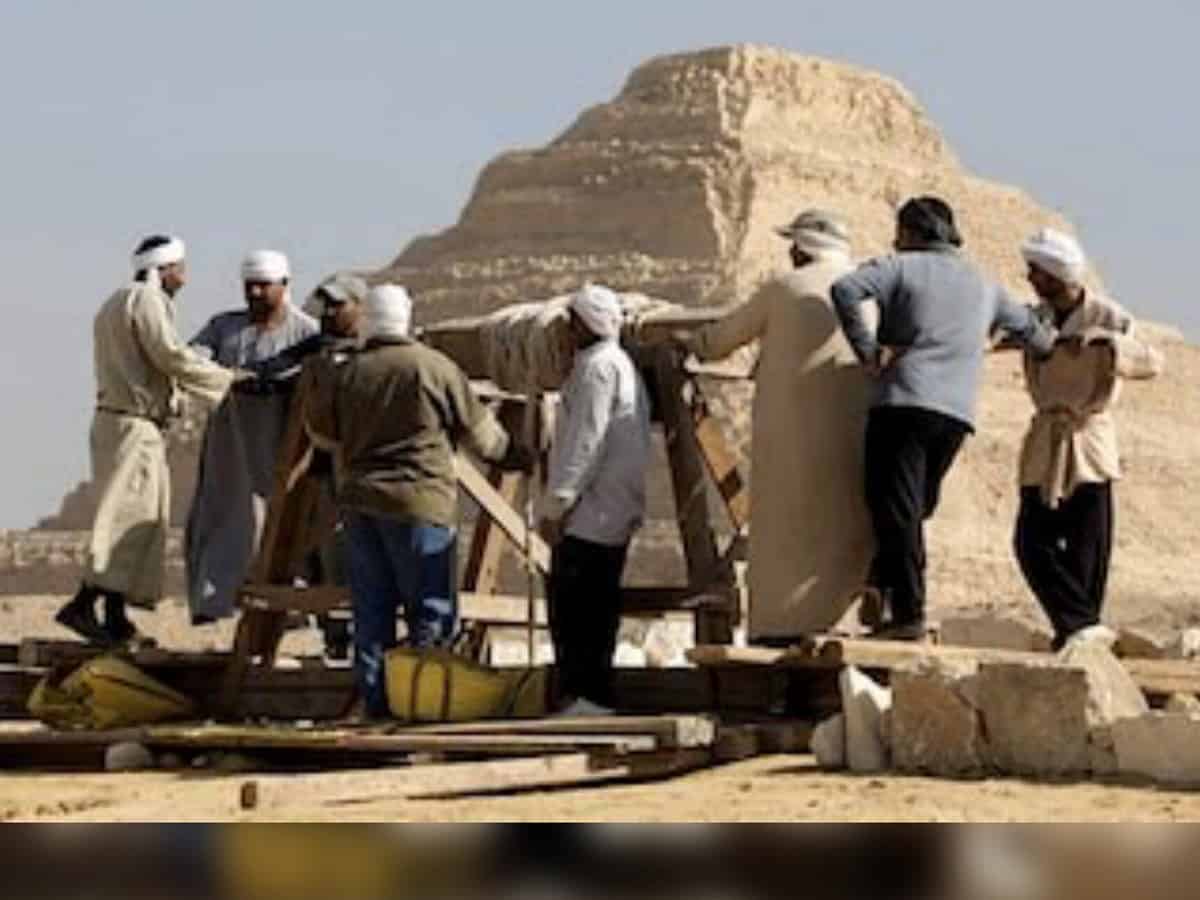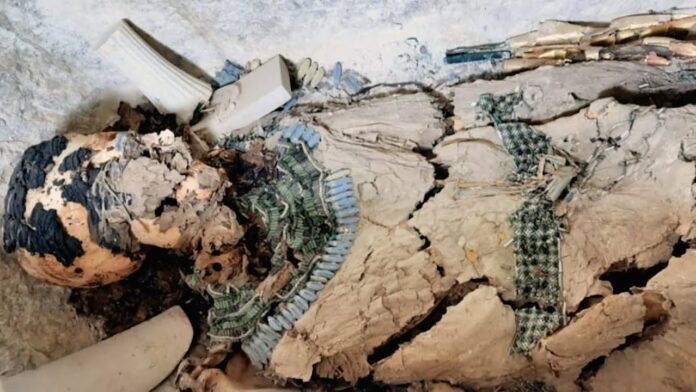Introduction
In a momentous find that has riveted the archaeological world, Egyptian researchers have uncovered the oldest non-royal mummy ever found in Egypt, buried deep within the historic site of Saqqara. This discovery, dating back over 4,000 years, offers a remarkable glimpse into ancient Egyptian burial customs and societal structures during the Old Kingdom era. Led by Dr. Zahi Hawass, the excavation team at Gisr el-Mudir announced these findings, highlighting the significance of the mummy and accompanying artifacts.

The Discovery Process
Saqqara, renowned for its ancient ruins near Cairo, has long been a focal point for archaeological exploration. Recently, attention peaked with the unearthing of a substantial limestone sarcophagus located at the base of a 50-foot vertical shaft. This massive sarcophagus, weighing about 45 tons with a lid of approximately 5 tons, remained sealed with mortar for millennia.

Unveiling Hekashepes
After meticulous efforts lasting about two hours, Dr. Hawass and his team successfully opened the sarcophagus, revealing the oldest non-royal mummy discovered in Egypt. Clad in gold leaf and identified by the inscription “HqA-Sps” (Hekashepes), the mummy’s elaborate burial suggests a person of significant status despite lacking royal lineage.
Significance of the Find
The discovery of Hekashepes holds profound significance on several fronts. It marks the earliest instance of a mummy wrapped in gold leaf in Egypt, underscoring the high societal standing of the individual. The meticulous burial, positioned 15 meters below ground level, reflects substantial resources and ceremonial attention dedicated to Hekashepes’ journey into the afterlife.

Additional Discoveries at Saqqara
While Hekashepes’ discovery stands out, it is complemented by other notable finds at Saqqara. In a separate excavation, Dr. Hawass and his team unearthed 14 stone statues from a 33-foot shaft, dating back to the Old Kingdom (2700-2200 BC). These statues, the largest collection found at Saqqara this century, offer fresh insights into ancient Egyptian art and burial practices.
Saqqara’s Historical Context
Saqqara, once a prominent necropolis and capital of ancient Egypt known as Memphis, boasts numerous pyramids, including the renowned Step Pyramid of Djoser. These recent discoveries enrich Saqqara’s extensive historical tapestry, providing invaluable insights into the cultural and religious practices of ancient Egyptians. As a UNESCO World Heritage site, Saqqara’s artifacts and tombs illuminate the complexities of this ancient civilization.

Recent Excavations in Luxor
The week’s archaeological triumphs extended beyond Saqqara, with another team unveiling a sprawling burial ground near Luxor’s Roman-era city ruins. These well-preserved artifacts and structures further illuminate daily life and customs in ancient Egypt, echoing the importance of ongoing excavations in unraveling history.
Conclusion
The unveiling of Egypt’s oldest non-royal mummy, adorned in gold and interred deep within Saqqara, underscores the enduring allure and intricacies of ancient Egyptian civilization. These discoveries, alongside unearthed statues and artifacts, deepen our understanding of Old Kingdom burial rites, artistry, and societal frameworks. Dr. Zahi Hawass and his team’s efforts continue to enrich global knowledge of ancient Egypt, captivating audiences worldwide with each new revelation. As archaeological endeavors persist in sites like Saqqara and Luxor, the legacy of Egypt’s pyramids, mummies, and cultural heritage remains an eternal source of fascination and discovery.




